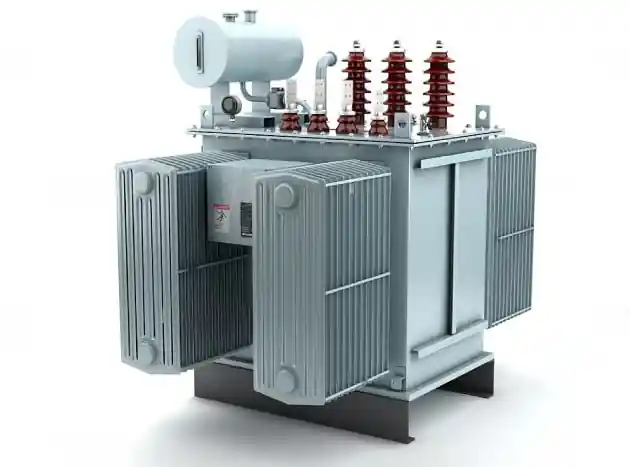What is a 132/33kV Transformer?
A 132/33kV transformer is a high-voltage step-down power transformer used in electrical substations and power transmission networks. Its main function is to reduce voltage from 132,000 volts (132kV) to 33,000 volts (33kV), making it suitable for downstream medium-voltage distribution to industrial zones, substations, or large infrastructure projects.
This voltage solutions transformation enables efficient long-distance transmission at 132kV and safe delivery at 33kV levels closer to consumption points. It is commonly used in grid substations, renewable energy hubs, and regional power distribution centers.

Typical Technical Specifications
| Specification | Details |
|---|---|
| Primary Voltage | 132 kV |
| Secondary Voltage | 33 kV |
| Frequency | 50 Hz / 60 Hz |
| Rated Power | 10 MVA to 100 MVA (common: 31.5 MVA, 50 MVA) |
| Phase Configuration | 3 Phase |
| Vector Group | Dyn11 / YNd11 (per system requirement) |
| Tapping Range | ±10% (with On-Load Tap Changer – OLTC) |
| Insulation Level | 145 kV (HV side), 36 kV (LV side) |
| Cooling Type | ONAN / ONAF / OFAF |
| Impedance | 8% to 12% (customized per grid) |
| Insulation Class | Class A / B / F |
| Applicable Standards | IEC 60076, ANSI, IS 2026, BS EN |
Core Components and Construction
1. Magnetic Core
- Made of cold-rolled grain-oriented (CRGO) silicon steel
- Step-lap construction for low core losses and noise
- High mechanical strength to withstand short-circuit forces
2. Windings
- Conductors: High-conductivity copper or aluminum
- Insulated using Nomex, Kraft paper, or epoxy-coated materials
- Designed for thermal efficiency and mechanical stability
3. Tank and Radiators
- Conservator-type or hermetically sealed oil tank
- Equipped with radiators, oil level indicators, air release valves
- Internal pressure relief devices for safety
4. Bushings
- HV Side: Porcelain or polymer insulated bushings rated for 145kV
- LV Side: 36kV class bushings
- Compliant with IEC/IEEE bushing standards
5. Tap Changer
- On-Load Tap Changer (OLTC) for voltage regulation during operation
- Common tap steps: ±10% in 17 or 21 steps

Cooling Methods
- ONAN (Oil Natural Air Natural): For base-load operation
- ONAF (Oil Natural Air Forced): Uses fans for better dissipation
- OFAF (Oil Forced Air Forced): For higher capacity or intensive load applications
Temperature sensors and WTI/OTI devices are used for monitoring.
Protection Devices
- Buchholz Relay for internal gas detection
- Winding & oil temperature indicators (WTI/OTI)
- Pressure relief valve (PRV)
- Sudden pressure relay
- Magnetic oil gauge (MOG)
- Overcurrent and differential protection (via external relays)
- Surge arresters for lightning and switching protection
Optional:
- Digital sensors for SCADA/IoT integration
- Remote monitoring units
Installation Requirements
- Solid concrete foundation with oil collection trench
- Proper clearance and fencing as per electrical safety norms
- Earth grid connection following IEEE 80 or IEC 61936-1
- Indoor or outdoor installation depending on the enclosure rating
Commissioning includes:
- IR test
- Transformer turns ratio (TTR) test
- Oil BDV and DGA analysis
- Winding resistance and vector group verification
Applications of 132/33kV Transformers
Utility & Grid Substations
- Step-down transformation for regional or urban networks
- Interfaces between high-voltage transmission and 33kV feeders
Renewable Energy Integration
- Solar farms and wind parks feeding power into the 132kV grid
- Hybrid substations combining clean energy and utility supply
Industrial Parks and SEZs
- Supplying medium-voltage power for heavy loads and manufacturing
- Often connected to 33kV ring main units (RMUs)
Urban Infrastructure
- Powering metro lines, airports, water treatment plants, hospitals
Mining, Oil & Gas Fields
- Portable or fixed transformers used in remote, high-demand operations
Advantages of 132/33kV Transformers
- Efficient high-to-medium voltage conversion
- Reduced transmission losses
- Designed for long-term reliability (20–30+ years lifespan)
- Scalable configurations: single, double, or parallel operation
- Easy to integrate with SCADA, protection, and automation systems
Maintenance Recommendations
- Routine visual inspections (leaks, deformation, rust)
- Annual oil testing (DGA, BDV, moisture)
- Periodic functional tests for relays and meters
- Cleaning of bushings and external components
- OLTC contact resistance and switching check
- IR thermography for hotspot detection
Preventive and predictive maintenance help reduce outages and extend life.
A 132/33kV transformer is a critical part of modern power systems, ensuring stable voltage reduction from transmission to distribution levels. Whether deployed in utility substations, renewable plants, or industrial hubs, this transformer type offers robust performance, high efficiency, and flexibility for future expansion.
With proper design, protection, and maintenance, a 132/33kV Transformer guide can serve as the backbone of regional electricity delivery and grid reliability.